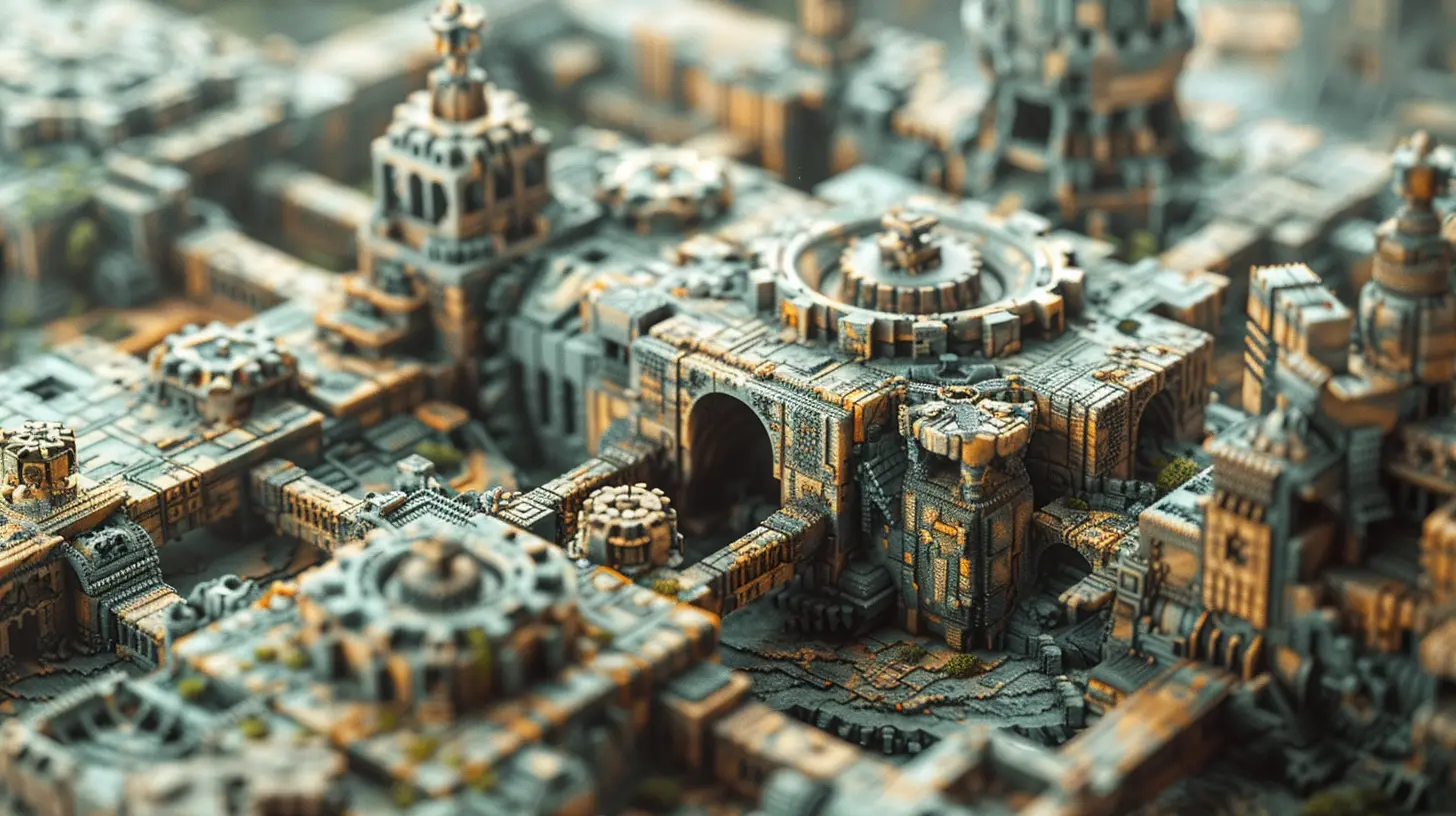Breaking Down Advanced Mechanics in Puzzle Games
20 November 2025
Ah, puzzle games. They're like the Rubik's Cube of the gaming world—frustrating, mind-bending, but oh-so-satisfying when you finally crack them. Whether you’re aligning candy, shifting tiles, or pushing a mysterious box across a digital map, puzzle games have a way of making you feel like a certified genius one moment and a clueless fool the next. But what exactly makes puzzle games so captivating? And why do some of them feel so much deeper and more complex than others?
Well, my friend, welcome to the world of advanced mechanics in puzzle games. It's a place where simple inputs give birth to intricate layers of strategy, timing, and brainpower. Today, we’re diving deep into what separates a good puzzle game from a mind-blowing one. Strap in—we’re about to untangle the tangled. 
What Are Advanced Mechanics in Puzzle Games?
Before we start throwing jargon around, let’s break this down. Advanced mechanics are essentially the hidden gears and levers that drive a game beyond its surface-level objectives. Puzzle games start simple—"match three colors," "get the cube to the other side," "rotate this thing until it's not broken anymore."But then, out of nowhere, bam! The game introduces something that flips the script. Maybe it’s a new rule, a curveball, or an added layer of complexity. These are the advanced mechanics, and they’re chef’s kiss—the secret sauce that makes your brain go from, "I’ve got this," to, "What in the world just happened?"
Advanced mechanics push players to think further, strategize harder, and often fail multiple times before figuring out the solution. They reward creativity, critical thinking, and patience. And honestly? They’re what make puzzle games so addictive. 
The Pillars of Advanced Puzzle Mechanics
To fully appreciate how these mechanics work, let’s break them into a few pillars. Each of these is like a building block for crafting a truly engaging puzzle game.1. Layered Systems
Great puzzle games rarely have you solving just one thing at a time. Instead, they layer systems together so that every move you make impacts something else. Think of it like juggling—except you’re juggling three flaming swords and a bowling pin at the same time.Take The Witness, for example. At first, it’s just drawing lines on grids. Simple enough, right? But then, it introduces rules: "Oh, you need to split these colors.” "Wait, now account for this shadow.” "By the way, this grid is invisible, so have fun figuring that out." Suddenly, your brain is multitasking in ways you never expected.
Layered systems work because they challenge players to manage multiple variables at once. The trick is in balancing complexity—too much can overwhelm, while too little becomes boring.
2. Rule Manipulation
Here’s where things get truly spicy. Rule manipulation is when a game forces you to bend or even break its own rules to succeed. It’s like the game says, “Here’s how everything works,” but then adds a sly, “...Or does it?”A standout example? Baba Is You. This gem doesn’t just want you to solve puzzles—it turns the concept of puzzle-solving on its head. The game’s entire premise revolves around rewriting its own rules. If "Baba Is You" and "Flag Is Win," then touching the flag wins the level. But you can literally rearrange the sentences to make something like "Wall Is Win" and suddenly interact with the environment in a completely different way.
Rule manipulation forces players to unlearn what they think they know and embrace creative anarchy. It’s a mechanic that keeps you on your toes, constantly questioning what you thought was possible.
3. Resource Management
Let’s talk about puzzle games that dabble in a little resource management, shall we? These games don’t just test your brain—they test your ability to plan and allocate.Take Sokoban-style games, for instance (think BoxBoy! or Stephen’s Sausage Roll). It’s not just about moving objects to the right locations—it’s about doing so with limited moves or in the correct sequence. One misstep, and you’re stuck wondering how a stupid sausage outsmarted you.
These mechanics force players to think ahead. They encourage efficiency in decision-making, and honestly? They’re just downright satisfying when you hit that perfect “aha!” moment.
4. Environmental Storytelling
Sometimes, the mechanics of a puzzle game aren’t immediately obvious because they’re hidden in the game’s world. This is what we call environmental storytelling. Games like Portal or Inside don’t just throw puzzles at you—they weave them into the very fabric of the environment.In Portal, for example, you’re given a gun that creates portals. Simple, right? But the game brilliantly uses its test chambers to teach you how to think with portals. By the time you reach the later levels, you’ve internalized advanced mechanics without even realizing it.
Environmental storytelling works because it immerses players in a world where every clue and solution feels like a natural part of the experience. It’s not just about solving puzzles—it’s about living them.
5. Time Mechanics
Ever notice how time-based puzzles make you feel like a stressed-out clockmaker? That’s the magic of time mechanics. These puzzles often involve manipulating, pausing, or even reversing time to progress.Take Braid, for instance. It’s a game that lets you rewind time to undo mistakes. But instead of just being a handy feature, the mechanic itself becomes the entire foundation of the puzzles. You’re not just solving static problems—you’re messing with timelines. It’s Doctor Who meets Sudoku.
Time mechanics add urgency and creativity to puzzles. They make every second count (literally) and open up a world of possibilities for players to experiment with. 
Why Advanced Mechanics Keep Us Hooked
Okay, we’ve nerded out about the mechanics themselves. But why do they matter? Why do puzzle games with advanced mechanics linger in our minds long after we’ve stopped playing?Here’s the tea: advanced mechanics make us feel smart. There’s a primal satisfaction in overcoming something that initially seemed insurmountable. It’s that dopamine rush from finally yelling, “AHA!” after 40 minutes of scratching your head.
And let’s not underestimate the element of surprise. Advanced mechanics introduce unpredictability. Just when you think you’ve cracked the game’s code, it throws something new at you, keeping the experience fresh and engaging. 
Tips for Tackling Advanced Puzzle Mechanics
Feel like every puzzle game is out to make you feel like a fool? Don’t worry—I’ve got your back. Here are a few tips for navigating advanced mechanics without throwing your controller across the room.1. Take your time – Seriously. Step back and breathe. Rushing never helps, especially when you’re stuck on a particularly tricky level.
2. Experiment wildly – Sometimes, the best solution comes from goofing around a little. Don’t be afraid to try something that feels wrong—you might just stumble upon the right answer.
3. Study the mechanics – Pay close attention to the rules. Games with advanced mechanics often give subtle hints in their design—use them to your advantage.
4. Fail forward – Trial and error is part of the process. Every failure gets you closer to understanding the game’s logic.
5. Walk away if you must – If all else fails, take a break. Sometimes your brain just needs a reset to see the solution with fresh eyes.
Final Thoughts
Advanced mechanics in puzzle games are what separate the good from the great—the games you enjoy from the ones you obsess over. They demand effort, creativity, and persistence, but they also reward you with a sense of accomplishment that few other gaming genres can replicate.So the next time you’re staring at a stubborn puzzle that’s making your head spin, remember: you’re not just solving a problem. You’re unraveling a masterpiece. Advanced puzzle mechanics may bend your brain, but they’ll also make it stronger.
Game on, puzzle warriors.
all images in this post were generated using AI tools
Category:
Gaming TipsAuthor:

Leif Coleman
Discussion
rate this article
1 comments
Velvet McGarvey
Insightful analysis enhances understanding of complex gameplay dynamics.
November 20, 2025 at 5:11 AM


